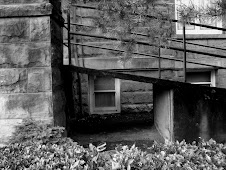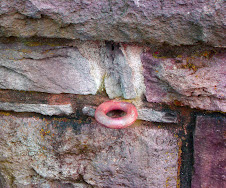I just listened to a couple of stories that were posted to the website The Moonlit Road. The stories themselves were good, but the freedom to think up my own settings…. well everything…made the stories so personal & consequently very rewarding. It was liberating to be taken on a journey but have the allowance to add my own imagery, which feels good – a more ready connection, I suppose.
This kind of free thought wrapped over the frame-work of a story can be found in literary works, but it takes on a whole new dimension when someone is orating a story – the mind is less encumbered with the deciphering of information.
So, here in lies a root of one of my primary investigation/interest – how can this freedom be supported/enhanced by the architectural expression of a narratorium.
Another primary interest that I have revolving around the narratorium is that they are gathering places. The idea or thrust for telling a story is that someone is able to transmit information to an audience for either entertainment, education, or both as an action of manifesting shared experiences – the mortar of communities.
The act of gathering has so many possible positive implications. It can strengthen communities by reminding each other and nurturing the phenomena that we thrive through the exchange of energy and information – it enables us to feel supported in our endeavors in life. The result is healthy living, empowerment, purpose, and opportunities. For me it is paramount that I find a way to allow the architecture to support this healthy gathering and magnetizing forum realized through the telling of stories.
The narratorium should, in my opinion, be deeply rooted in the fabric of the setting – it should be born of the environment. The building ought to tell the story of Portland, of Oregon, the ocean, the woods, the history, the Northwest, the possibilities…. At the same time it should not exclude the global community. It should pay homage to the art of story telling found anywhere in the world. That sounds daunting to say, but really if the environment can truly support the essence of telling a story it should not matter where that story comes from.
I think it would be helpful to research some successful community centers to glean ideas about how space can nurture communal interactions and then inject that information into the approach of forming space around the needs.
As for the daily operations of a narratorium my first visions include an open listening room where people can access archived stories at their leaguer. This listening room is supported by an active café performing the function of sustenance so that the patrons are not distracted by the need for physiological satiation. I can imagine a recording studio for radio programs. I can also see some sort of gallery dedicated to the art of telling stories and listening. This could be a destination for education – school tours and various other peoples looking for more insight into story telling.
The other ways that a narratorium can engage with the city might include in an in-house training of aspiring storytellers. Maybe the building also serves as a bank for Oregon’s stories & related themes.
On monthly or more pronounced occasions the narratorium could facilitate guest speakers or specialized readings. Perhaps there are a couple of days during the week where people are invited to come and listen to each other’s life stories, which might include groups such as veterans or culturally related assemblies, i.e. Jewish people, national immigrants, Native Americans, or the rich folk stories centered around the Appalachian people.
I feel that more will be revealed to me about what I think a narratorium should be when I engage more directly in my explorations of forming space around my initial intrigues. My next step would be do condense what has already been said and what might take shape into a concise statement of intent – something that I can continually check my work against.
















No comments:
Post a Comment